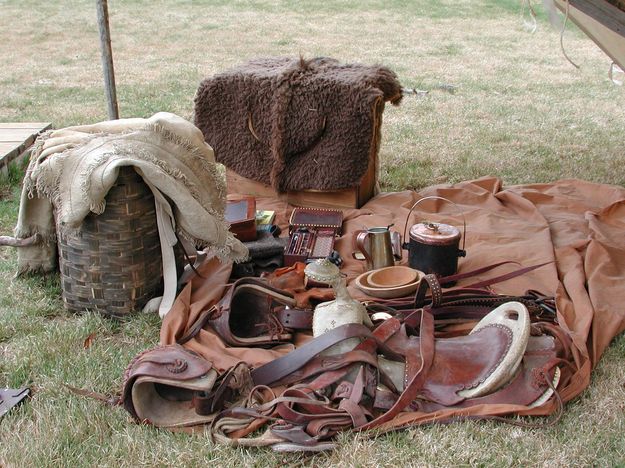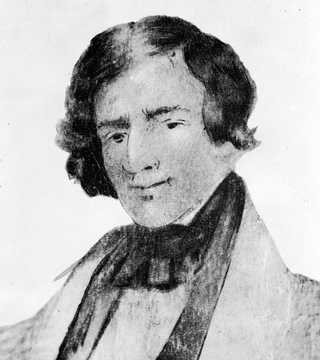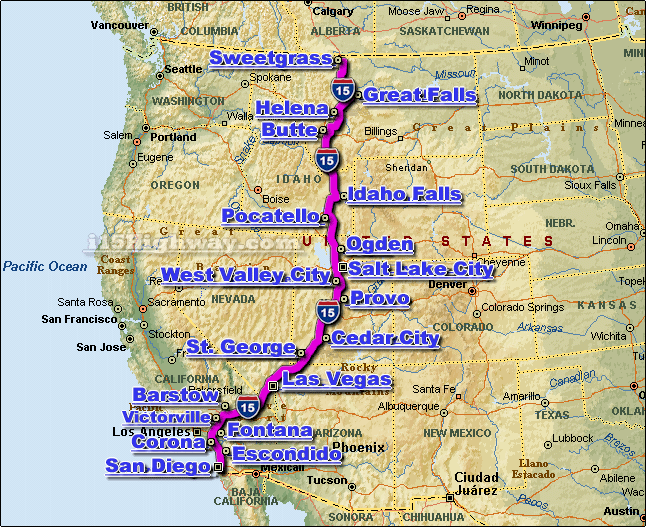I had the opportunity to talk with a mountain man re-enactor who takes time out of his busy schedule to attend rendezvous re-enactments in character. While this might sound a little odd to some, out here in western Wyoming it is more common than you might think. We have three rendezvous in our area; the Bear River Rendezvous, the Fort Bridger Rendezvous, and the Green River Rendezvous that have quite the turn out. Traditionally speaking, rendezvous were trading camps that gave mountain men the opportunity to resupply and to sell their pelts without having to make the hazardous trip back to the east. The re-enactments that are held today rekindle the spirit of these rowdy camps as they seek to educate and entertain the people of today.
The video show above is from the University of Wyoming showing and describing a bit of what these rendezvous were and are.
I was able to interview Mountain Man Pete. Mountain Man Pete is a husband and a father; he has a regular job but he takes time out of his summer to participate in the local rendezvous re-enactments. You would not know it by looking at him that he dresses in leather and plays with tomahawks for a hobby, but he is a very engaging man who cares about preserving the rendezvous.
What exactly is a mountain man re-enactor?
“It’s someone who dresses up in period clothing and sets aside that time to be in the time period of the mountain man. We camp, eat, drink, sleep, and play like the mountain men did during their rendezvous.”
Why do you do it?
“I like to do it because it reminds me to take time to do the things I like. It’s nice to rough it. And I like the games. We throw knives, tomahawks and shoot black powder guns. What is more fun than that? I also like the people. Nearly everyone comes back from year to year and that makes it even better.”
What do you wear while you’re at the rendezvous?
“I have a handmade outfit made of leather. That might sound uncomfortable, but it’s surprisingly soft. I also wear leather moccasins. And a belt; it has my knives and tomahawk hanging on it. Sometimes I wear a cotton shirt and a hat.”
Why do you think it’s important to keep the idea of the rendezvous alive?
“There is something about that time period that speaks to a lot of us out here in the west. A time when a man can take nothing into the west and come back with a fortune. It was a time when a man could make or break himself and the world was at his feet. And let’s face it, it’s when a man could be a man and do just about whatever he pleased. Mighta got him killed, but he could do it without much harm to others. That part of our history needs to be remembered. The mountain man embodies the American spirit.”
There are a lot of costumes out there. Why did you choose yours?
“I’ve seen some pretty crazy stuff. Hell, last year there was this guy walking around in nothing but a loin cloth and some feathers. I mean nothing! That’s not for me. I wear the leather because it’s what a mountain man wore when his store bought clothes wore out. I like them because it’s something that someone made with their own hands and that means a lot. I also like it because it’s comfortable. The leather is really soft. But I do draw the line at underwear.”
Are women and kids allowed to join in the re-enactment?
“Of course they are! It is true that in the real rendezvous there would only be maybe a few prostitutes and probably no kids, but we welcome anyone. Tourists can wear whatever they want, but the re-enactors stay to the time period. Kids and women and men can wear Indian clothing, eastern clothing, pioneer clothing or mountain man clothes. Every year it seems like there are more women and kids coming. That makes it fun. My son likes to come too. He dresses up like a mountain man. But he’s seventeen, so I don’t know if he counts. Back then he would have been a man for years now.”
Do you think that these re-enactments are true to the period?
“We try to. There are people who come in trying to sell fake stuff, but we take care of that pretty easy. Mostly people come and sell handmade, period stuff. It’s pretty cool. And we have demonstrations and talks about different skills like packing a horse or tanning a hide. It can’t be completely to period because we want the public to come so they kinda put a kink in it by not being in character. But I think there is a lot to be learned and it really is a good time. And we don’t drink as much or kill anyone the way that the real rendezvous might have. Oh, and we don’t have the working girls, either. (laughs)”
Thank you for taking the time to talk to me about your mountain man persona. Is there anything else?
“If you haven’t made it to a rendezvous, you should. They are a lot of fun with really great people that are trying to educate and remind people that America has not always been the way it is now and that there is a rich history here, even in the west. They are great for family trips and for a fun couple of days. Come play the games, I’ll teach just about anyone to throw a knife!”
The following is a video from Teton Todd; it is a bit long, but it really shows the Fort Bridger Rendezvous well.




